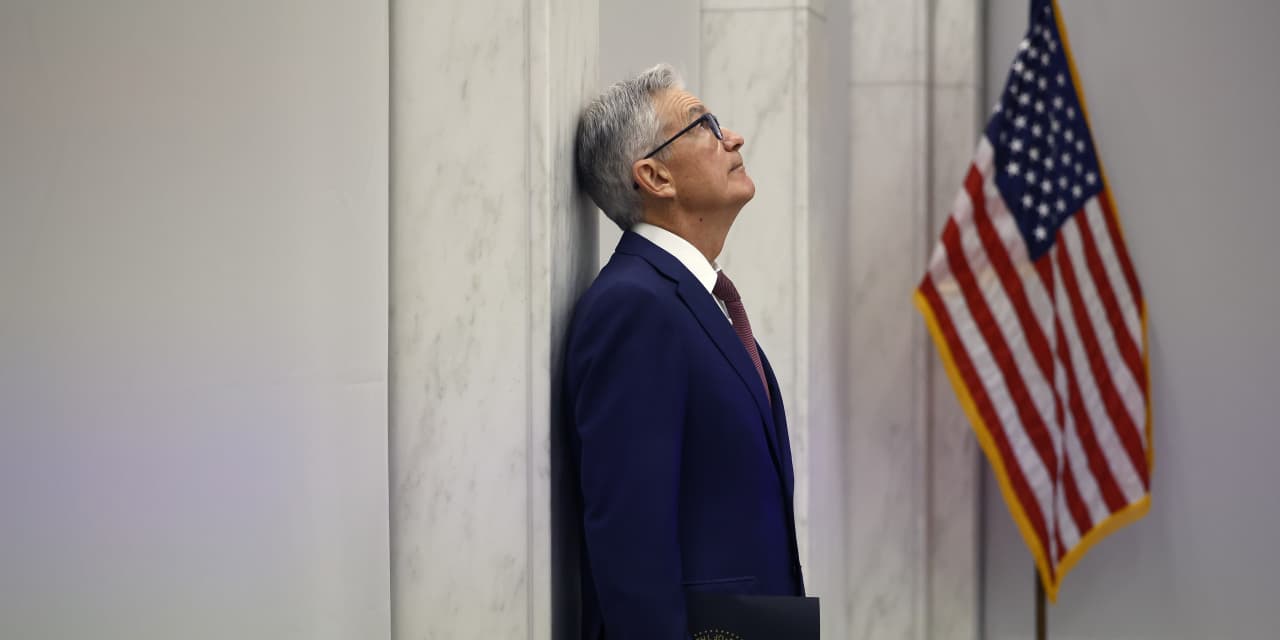It’s the middle of earnings season, but the Treasury market is doing more to move the stock market than any company fundamentals.
Stocks have had a wild ride in recent months—but it’s nothing compared with what has happened in bonds. From 3.95% at the end of June, the 10-year U.S. Treasury yield surged to nearly 5% by mid-October, a payout level not seen in 16 years. Buyers swooped in—it’s a nice round number, after all—and by Nov. 3, the yield had dropped to 4.52%. The stock market followed along. The
S&P 500 index
fell 10% from the end of July through late October, and has since risen 75%.
Bonds’ influence on stocks was on display once again this past week. On Thursday, a $24 billion auction of 30-year U.S. Treasury bonds showed some cracks in demand. Primary dealers were forced to accept 25% of the offering, more than double the average over the past year. The auction had a large tail, meaning the Treasury needed to entice buyers with a premium yield over where 30-year bonds were trading in the open market. The S&P 500, which had been rallying, fell 0.8% that day.
It’s a potential preview of what’s to come. The federal government ran a deficit of $1.7 trillion in its fiscal 2023, which ended in September, more than its entire debt load in 1985. Heavy borrowing means lots of Treasury issuance, just as the two biggest buyers of the past decade are largely out of the market—the Fed is doing quantitative tightening, and China has other issues. Turns out, demand for Treasuries isn’t limitless.
“A failed Treasury auction is what really keeps me up,” says Tim Horan, chief investment officer for fixed income at Chilton Trust. “It would certainly be a Minsky moment,” using a term that refers to a market collapse brought on by the sudden unwinding of excessive debt.
The influence of the fiscal side of the yield equation will only get stronger. The U.S. federal deficit will be in focus this coming week with Congress facing a Friday deadline to avoid a government shutdown. Even the most Pollyanna-ish among us doesn’t expect Congress, with a newbie speaker of the House, to suddenly rediscover fiscal probity and balance the budget by the end of this week. A government shutdown is a more likely outcome, or a continuing resolution that keeps the current excess of spending over revenue going. A return to a 5% yield on the 10-year Treasury isn’t out of the question.
“In the near term, the risk is that yields go higher,” says Adam Abbas, co-head of fixed income at Harris Associates. “There’s a lot of Treasury supply out there, and the deficit narrative is gaining traction—there doesn’t seem to be a real long-term solution in Washington.”
While fiscal policy is on the ascent, the influence of the Federal Reserve hasn’t waned completely. Yes, the Fed may be done raising interest rates. Or maybe not: Chairman Jerome Powell on Thursday stressed that additional rate increases weren’t off the table. Inflation has given policy makers a few “head fakes,” and it will take more than a couple of months of disinflationary momentum to declare mission accomplished.
Still, the market ended up having a fairly uneventful week. The S&P 500 gained 1.31%, while the
Nasdaq Composite
rose 2.37% and the
Dow Jones Industrial Average
added 0.65%. That makes sense, given that the 10-year Treasury yield held steady around 4.63%.
The next long-bond auction is scheduled for Nov. 20. The market’s angst over the scale of the Treasury’s borrowing adds a third variable to the Fed’s calculations, on top of inflation and employment—one that could shake up stocks once again.
It’s a Treasury bond world. Stock investors are just living in it.
Write to Nicholas Jasinski at [email protected]
Read the full article here







